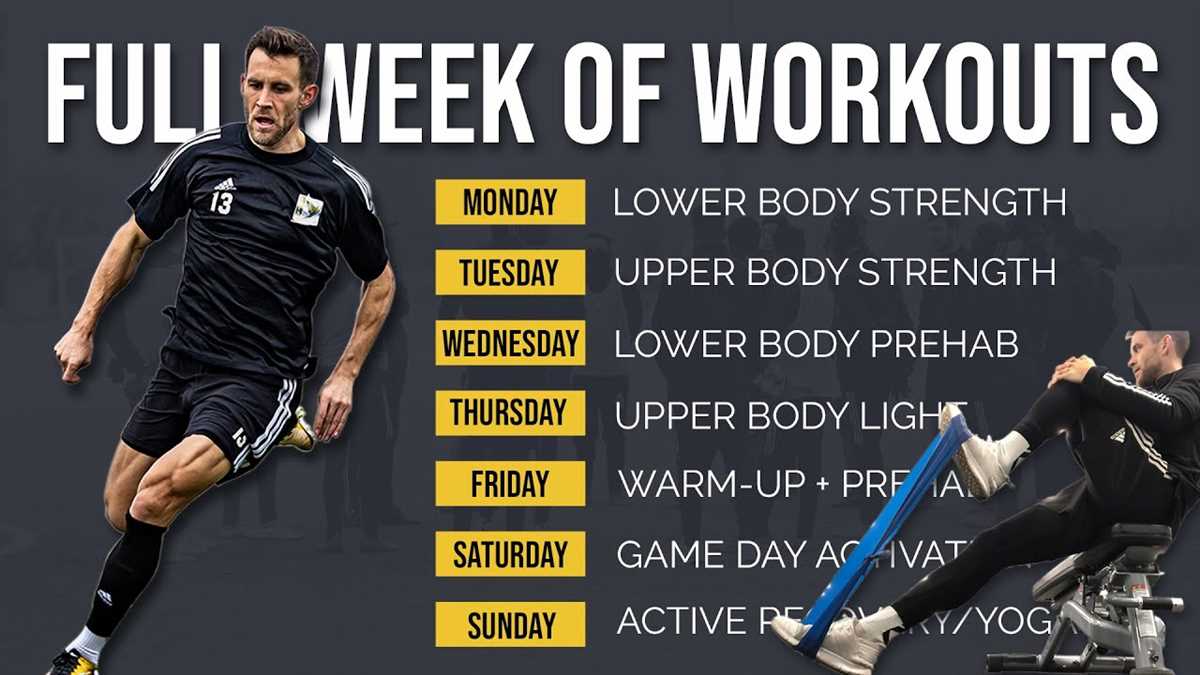In the world of professional sports, a tailored training regimen is essential for peak performance and sustained success. Athletes dedicate significant time to develop strength, agility, and endurance, ensuring they excel in their field. This segment delves into a specialized training plan designed to enhance athletic capabilities, integrating various exercises and drills that target key physical attributes.
Comprehensive preparation involves a blend of strength-building activities, cardiovascular exercises, and tactical drills. Each component is carefully structured to address different aspects of physical fitness, contributing to overall improvement. By following a well-rounded approach, individuals can achieve their fitness goals and enhance their performance on the field.
Football Training Regimen

A comprehensive athletic regimen plays a crucial role in preparing for high-level competitions. This structured plan encompasses various exercises and drills aimed at enhancing physical fitness, agility, and skill development on the field. The focus is on combining endurance training, strength conditioning, and technical drills to build a well-rounded athlete.
The following table outlines the essential components of this training regimen:
| Type of Training | Description | Frequency |
|---|---|---|
| Endurance Exercises | Activities designed to improve stamina and cardiovascular health. | 3 times per week |
| Strength Conditioning | Workouts focused on enhancing muscle power and overall strength. | 2 times per week |
| Technical Drills | Practices that emphasize ball control, passing, and tactical skills. | 4 times per week |
| Recovery Sessions | Activities aimed at muscle recovery and injury prevention. | 1 time per week |
Dynamic Drills for On-Field Agility

Enhancing agility on the field requires a range of dynamic exercises designed to improve quickness, coordination, and reaction time. These drills focus on developing the ability to change direction rapidly while maintaining control and balance. Integrating various movements into practice can help athletes adapt to the fast-paced nature of the game and respond effectively to on-field situations.
Agility Ladder Exercises: Utilizing an agility ladder helps in improving foot speed and coordination. Perform drills that involve quick stepping, lateral movements, and intricate footwork patterns to enhance responsiveness and precision.
Cones Drills: Setting up cones in various formations and executing drills that involve weaving, sprinting, and sharp turns can significantly boost agility. These exercises simulate real-game scenarios, requiring athletes to maneuver around obstacles efficiently.
Shadowing Drills: Practicing shadowing involves mimicking the movements of a partner or coach. This drill helps in developing reaction time and the ability to mirror the movements of opponents, thus improving defensive and offensive agility.
Incorporating these dynamic drills into regular training sessions will build a solid foundation for on-field agility, allowing athletes to perform with greater effectiveness during matches.
Strength Building Exercises for Athletes
Developing muscular power is crucial for enhancing performance on the field. A well-rounded regimen focusing on strength can significantly impact an athlete’s ability to excel in their sport. This section outlines effective exercises that contribute to building core strength and overall physical resilience.
Resistance Training plays a key role in increasing muscle mass and strength. Incorporating exercises such as squats, deadlifts, and bench presses can improve lower and upper body strength. These movements target multiple muscle groups, promoting balanced development and stability.
Explosive Movements are essential for athletes who need to demonstrate power and quickness. Plyometric exercises, including box jumps and kettlebell swings, enhance the explosive force necessary for dynamic movements and sudden bursts of speed.
Core Strength is fundamental for maintaining proper posture and stability during intense activities. Exercises such as planks, Russian twists, and leg raises are effective for strengthening the abdominal and lower back muscles, providing a solid foundation for athletic performance.
Functional Training incorporates movements that mimic those used in competitive scenarios. Exercises like lunges with rotations and medicine ball throws help athletes improve coordination and functional strength, making them more adaptable to the demands of their sport.
Recovery Techniques After Intense Training
Post-exercise recovery is essential for maintaining peak performance and preventing injuries. Implementing effective strategies can significantly enhance the body’s ability to recuperate and prepare for subsequent physical activities.
- Hydration: Replenish fluids lost through sweating to aid in recovery and avoid dehydration.
- Nutrition: Consume a balanced meal rich in proteins and carbohydrates to support muscle repair and energy replenishment.
- Stretching: Engage in gentle stretching exercises to maintain flexibility and reduce muscle tightness.
- Rest: Allow sufficient time for rest and sleep to facilitate the body’s natural healing processes.
- Massage: Consider using massage techniques or foam rollers to alleviate muscle soreness and improve circulation.




